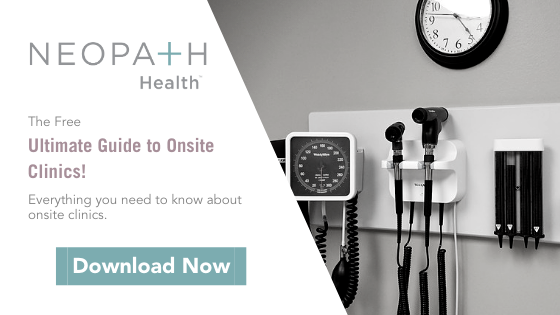Building a strategic employee health and wellness plan from the ground-up is a big undertaking that can have huge benefits if done right. When it comes to putting your plan down in writing, there is a lot of thought, research, and pre-planning that goes into what to include.
Your plan will most likely incorporate some information that is internal to your company management, and the rest of the plan will be for your employees as a kind of guide for how to use your well-planned programming.
We've put together some great tips for writing your strategic employee health and wellness plan and broken it down into internal-facing information as well as your employee-facing plan.

Writing an Internal-Facing Employee Health and Wellness Plan
1. Your Sell to Management
It's always a good idea to go to management with a well-baked idea, backed with facts and statistics. Writing up a comprehensive employee health and wellness plan can help with the sell to management, and you'll want to get their approval and buy-in sooner rather than later.
To get management buy-in, include information about the importance of wellness in the workplace and as well as examples of other companies who have seen positive results from their wellness initiatives. Outline what kinds of returns, both monetary and value-based, you'd expect to see within your own company from your plan.
2. Outline Employee Needs & Company Goals
You'll want to have a clear understanding of your employees' needs and the overall goals of your wellness program to guide the direction of your employee-facing wellness plan writing. Here are a couple of important steps for this initiative.
Conduct Assessments
One of the best ways to understand the needs of your employees when it comes to their health and wellness is to take it straight to them.
- Conduct an employee needs survey - Ask them what they feel they need from a comprehensive wellness plan.
- Offer a health risk assessment - This should be completely voluntary and anonymous. But, understanding what kinds of health risks your employees may be facing helps you understand where and how to focus your efforts when it comes to your program initiatives.
- Create focus groups or a wellness committee - If you feel employees may be more receptive to coming up with ideas or providing honest feedback about their health needs to other employees, create a wellness committee or focus groups that can work together to uncover the needs of the larger workforce.
Develop Goals & Objectives
Goals are wide, overarching targets you'd like to achieve by offering an employee wellness plan. Objectives are the means behind how you plan to reach your goals. Objectives are specific, measurable, and should include a timeline or due date. See a few examples of each listed below.
Goal Examples:
- Improve health of workforce
- Reduce health care costs
- Reduce absenteeism/presenteeism
- Improve company culture
Examples of Objectives:
- Assist 10 employees with smoking cessation within 6 months of the start of the program
- Reduce sick days taken by 5 per month by (set date)
- Obtain 25% utilization of wellness program by end of fiscal year
Each of your goals should have 2-3 objectives that map directly to them. Another important aspect of creating goals and objectives is understanding how you are going to measure the results when the time comes.
3. Create Your Budget
You should have your budget set and approved prior to writing out the employee-facing part of your wellness plan. Your budget can have a huge effect on what you will be able to offer and include.

Will your company foot the entire bill? Will there be any kind of monetary ask from employees or donors? Will you have the ability to reroute any funds from a different budget into this one?
Your budget will include all of the equipment and personnel that will be necessary to get the program off of the ground, including the cost of bringing in outside professionals or services. Keep in mind, your budget will also need to include room for marketing or promotional materials to spread the word to everyone, as well as covering the cost of incentives if you will be offering any. And while you may be worried about the crunch of the additional budget, there are ways to cut cost elsewhere in order to afford and reap the benefits from a wellness program. Here is a great sample wellness budget provided by the CDC.
4. Build an Implementation Plan & Timeline
If there are many different components in your health and wellness plan, it may take you longer to roll out some than others. For example, if you are going to bring in an onsite masseuse, you could probably find someone within a day or so. However, if you are planning to offer a meditation room, you may need to rearrange an office or build out a space that doesn't exist yet which could take several weeks.
Take some time to think through how long it might take to implement each of the components of your wellness plan. Then, prioritize and organize them into a timeline with specific target due dates.
Employee-Facing Employee Health and Wellness Plan
Now, it's time to get into the writing of your wellness program plan that you will ultimately present to your workforce. You can use the following sections as a template.
5. Introduction - Why is Your Company Offering this Program?
This section is where you essentially do the same selling you did to management earlier, but this time to your employees. Describe why you are offering a health and wellness plan; if possible, map it to your company mission or values. If your employees are bought into those, it will help them understand the level of your commitment and importance of this new program.
6. Show Employees the Benefits
Now that your employees understand health and wellness issues and why your company is doing something about it, explain exactly what they can get out of it on an individual basis. Outline the benefits to your employees for participating- what do they have to gain?
7. Establish Scope of the Health and Wellness Plan
Does the entire plan cover all employees? Do any parts include employee dependents or spouses? Is each component fully available at any time or are there some that employees may need to build up to by participating in other components first?
You'll want to make the scope very clear so there isn't any confusion or frustration once things get up and running because that could lead to dropouts or negativity toward the program.
8. List Out Wellness Program Components
Your program components should become clear from all of the research you did into your employee's needs, from the findings from your focus groups, and essentially directly from the goals that you created earlier in the process. Typical wellness program components tend to look like the following. You can find additional ideas here as well.
- Weight loss programs
- Smoking cessation programs
- Stress management resources
- Minimize health risks like blood pressure and cholesterol
- Physical fitness programs

9. Map Resources Offered to Components
Much like how you mapped specific objectives to your overarching goals, you will do the same here by mapping specific resources to your plan components. These things outline exactly how you plan to help employees achieve things like weight loss and reducing their blood pressure. See examples below:
- Weight loss
- Nutrition information sessions
- Healthy cooking classes
- Healthy snacks, drinks, and cafeteria options
- Smoking cessation
- Support groups
- Provide "quit kits" or cover cessation medication in insurance benefits
- Stress management
- Nap/meditation rooms
- Mindfulness resources like apps or mindfulness coaches
- Onsite masseuse
- Minimize health risks like blood pressure and cholesterol
- Health risk assessments
- Health screenings
- Onsite vaccination clinics
- Improve physical fitness
- Gym memberships
- Onsite physical fitness center
- Yoga classes
- Company-sponsored fitness events (5Ks, walk-a-thons, pickup basketball, etc.)
10. Drive It All Home with Program Incentives or Rewards
Just offering a wellness program and resources doesn't mean your employees will take advantage of them. Quite often to encourage participation, especially early-on, companies will incentivize the utilization of the program or individual positive outcomes that are discovered through that utilization. Here are a handful of great incentive ideas:
- Cash reward for reaching a personal goal
- Paid time off to participate in a company-sponsored fitness event
- Reduction in health insurance premiums for quitting smoking
- Gift card for lowering blood pressure from one screening to the next
Additionally, here are some ways to tell if your program is working once it's launched.
Conclusion
From one company to the next, no single health and wellness plan or program is identical. Each set of employees is unique and their needs will be as well. This may mean your plan could take a little experimentation to get it just right. You can use pieces and parts of this guide or include additional sections that we haven't listed. Be flexible and open to adaptations and remember the wise words of this popular, anonymous quote, "If the plan doesn’t work, change the plan, but never the goal."
.png?width=433&name=NeoPath_2019_logo_2color%20(1).png)




